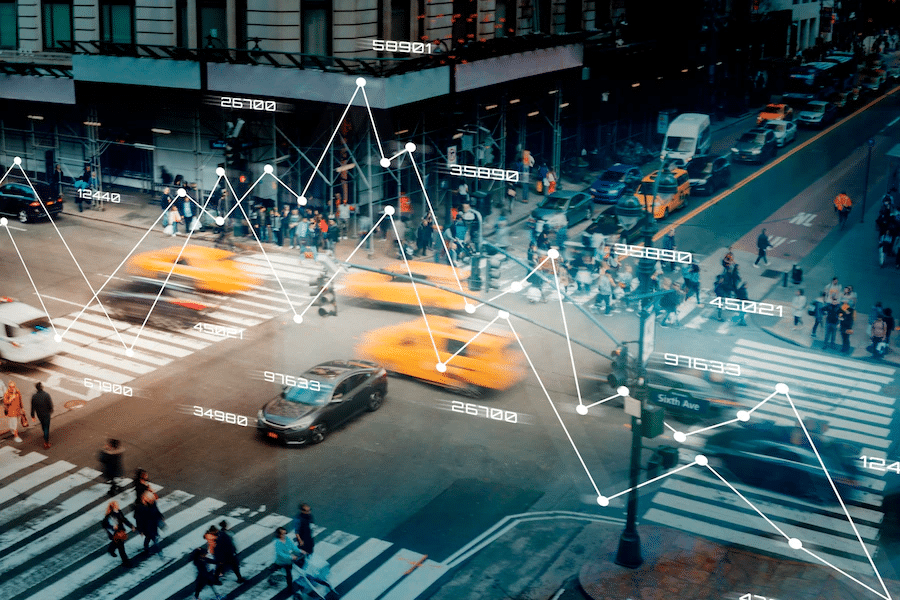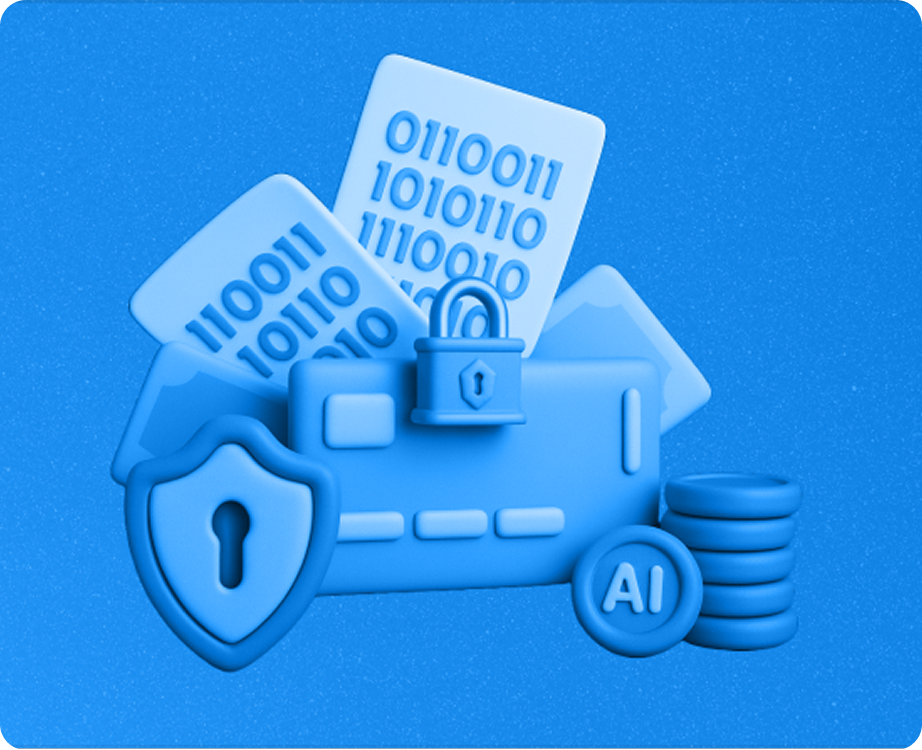Introduction
Video analytics technology has been making waves in both industry and academia lately. It’s becoming quite a hot topic and a compelling field of study!
Going by different names like video content analysis or intelligent video analytics makes it so exciting because of its strong connection to deep learning methods. This partnership with deep learning has unlocked a whole new world of possibilities for automation!
Imagine this — tasks that used to be done solely by humans are now accomplished with incredible efficiency thanks to video analytics. It’s analysing and understanding videos in ways we could only dream of before.
The advancements in video analytics have truly revolutionised the game. Its vast capabilities range from real-time traffic monitoring and timely notifications to analysing customer flow in retail environments, resulting in optimised sales. And let’s not forget that sub-applications like facial recognition and intelligent parking systems are now commonly used.
You may wonder how this technology works and can benefit your business. Well, fear not! In this comprehensive guide, we will dive deep into the fundamental concepts of video analytics. We will explore its practical applications in automating processes and gaining valuable insights.
Video Analytics at Akaike Technologies
Akaike Technologies extracts valuable insights from video footage to enhance decision-making and deepen your understanding. Our expertise lies in utilising this powerful tool to glean helpful information, such as store walk-ins from videos. We are dedicated to providing you with the highest quality results and helping you make more informed choices based on the data we extract.
Are you ready to revolutionise the way you do business? Join us on this exhilarating adventure and experience the endless opportunities of video analytics.
We helped our automobile retail client improve their in-store experience by using advanced Vision AI technology to understand walk-in prospects, personalize interactions, and collect valuable feedback. With over 95% accuracy, we analyzed two years of video data. We provided real-time insights, including footfall traffic, demographics, and emotion detection, empowering the marketing team to create joyous customer journeys.
What is intelligent video analytics?
One of the incredible benefits of video content analysis is its ability to automate tasks that used to require manual effort. With the help of video analytics, tasks like counting people in a video or identifying specific objects across multiple live stream cameras can now be done effortlessly.
At the core of video analytics lies a crucial goal: automatically recognising events in
videos, both in time and space. Think of it as a vigilant observer that can identify various occurrences – from suspicious behaviour by individuals to disregard for traffic signs and even the sudden appearance of flames and smoke. Video analytics’ capabilities are remarkable and can prove invaluable in many scenarios where its perceptive abilities are needed.
The fascinating realm of real-time video analytics and video mining!
The potential of video analytics goes far beyond just real-time monitoring and excels in historical data analysis. By thoroughly analysing past video footage through forensic analysis, we can uncover invaluable insights and trends that are key to answering critical business questions.
For instance, video technology offers unmatched situational awareness to assist security teams. By continuously streaming video feeds from various areas, cameras become the organisation’s virtual eyes and ears. However, monitoring all these feeds can be overwhelming for understaffed organizations. Analytics platforms generate alerts for security and safety issues, eliminating the need for constant video review.
A lumber mill faced safety challenges at one of its sites near an apartment complex. Children occasionally wandered into the facility from the nearby playground, posing risks. To address this, they implemented virtual fence lines with cameras monitoring the entrances. If someone entered a dangerous area unexpectedly, the system alerted security teams, who would swiftly assess the situation via video clips on their phones and trigger a shutdown if needed. This proactive approach significantly improved safety measures.
How does Video analytics work with Deep learning?

Deep Neural Networks (DNNs) have driven this paradigm shift, enabling video analysis systems to emulate human behaviour like never before. We’ve come a long way from basic computer vision techniques that triggered alerts in response to simple image changes. Now, we have sophisticated systems that can precisely identify specific objects in an image and track their movements.
Take Optical Character Recognition (OCR) as an example. Even though it has been used for years to extract text from images, applying it directly to a license plate posed many limitations. This was because when performing OCR, one had to ensure the camera was positioned correctly and focused exclusively on license plates.
With cameras strategically placed near the gates, capturing license plates when cars come to a stop, the new video analytics models coupled with OCR deliver dependable outcomes.
What are the industrial applications of video analytics?
Let’s explore the exciting and diverse applications of video analytics across various industries!
Healthcare industry

Video analytics has revolutionised the healthcare industry by ensuring the safety of patients, staff, and visitors while complying with strict regulations. In addition to its surveillance capabilities, video analytics allows us to extract valuable insights from the data to achieve business objectives.
For example, it can identify when patients require medical attention and promptly alert the staff. It can also optimise patient and visitor traffic flow and facilitate at-home monitoring for older adults or individuals with health issues. The potential of this technology in mental healthcare is also promising, as it aids clinicians in evaluating patients by analysing their facial expressions, body posture, and gazeSmart cities
Smart Cities

By analysing traffic patterns in real-time, traffic light control systems can be dynamically adjusted, and dangerous situations such as accidents or unauthorised activity on the road can be detected. By analysing security camera images, this technology facilitates vehicle counting, identifying different types of vehicles, and even implementing intelligent parking systems.
Retail sector

By recognizing faces and determining key customer characteristics like age and gender, retailers gain valuable insights into customer behavior, store navigation patterns, and individual product interests. With this wealth of information, retailers can optimize store layouts for better customer experiences while maximizing sales. Video analytics also effectively develops anti-theft mechanisms by spotting shoplifters promptly to prevent losses.
Security

The security industry has greatly benefited from the advancements in video analytics. Traditional video surveillance has been transformed by introducing facial and license plate recognition techniques, allowing for real-time identification. Additionally, video analytics aids in crowd management by estimating crowd counts and analysing movement patterns, resulting in more efficient protocols. The versatility of this technology extends to detecting specific events such as fires, unauthorised access, or unattended baggage, leading to significant improvements in security measures.
Sports

In the world of sports, data-driven approaches have brought about a revolution. Video analytics provides invaluable insights for coaches, athletes, and teams alike. From analysing statistics like ball possession in soccer matches to understanding athlete poses during training sessions, video analysis enhances performance and helps prevent injuries. Using video analysis tools, coaches can now study opponents’ game strategies and develop effective counters.
For instance, Fujitsu has unveiled an AI-enhanced video analysis system to support TOYOTA GAZOO Racing (TGR) in the FIA World Endurance Championship (WEC). The system debuted at the 6 Hours of Spa-Francorchamps event, enabling TGR to adapt to evolving racing conditions using real-time video data from in-vehicle cameras. The technology will also be applied at the 24 Hours of Le Mans. Fujitsu aims to enhance performance, engage fans, and promote sustainable race management in motorsports. By leveraging AI technology, TGR can swiftly evaluate and adjust racing strategies for split-second decisions in an intense racing environment. The system is optimised for day, night, and adverse weather conditions, enhancing real-time race strategies.
These are just a glimpse of video analytics’s remarkable contributions across industries, driving innovation and optimising processes. As technology advances, we can expect even more exciting possibilities and real-world applications to elevate businesses further and enhance our lives.
What is the mechanism behind video analytics?
Let’s take a closer look at the fundamental mechanics of a video analytics solution, which maintains a consistent structure across various use cases, regardless of its architecture.
Video content analysis involves two main approaches: real-time analysis and post-processing analysis.
In real-time analysis, the system is designed to generate alerts for unfolding events and incidents. On the other hand, post-processing analysis entails conducting comprehensive searches to support forensic analysis.
Data Ingestion
Data ingestion is an essential aspect of video analytics. The data that needs to be analysed comes from various streaming video sources, with CCTV cameras, traffic cameras, and online video feeds being the most common. However, any video source that uses compatible protocols like RTSP or HTTP can be integrated into the solution.
Having comprehensive coverage is crucial for accurate event identification. It is essential to have a clear view of the entire monitored area captured from different angles since more data enhances processing potential.
Setting up the camera system
There are two ways to implement video analysis software: centrally on servers or directly within the cameras (edge processing). Selecting the appropriate cameras plays a significant role in designing an effective solution. While legacy software traditionally favoured central processing, modern trends have introduced hybrid solutions. It is now considered a best practice to assign real-time processing tasks to cameras whenever feasible while reserving the central server for forensic analysis functions.
Adopting a hybrid approach significantly reduces the data processed by central servers. This helps to alleviate the need for extensive processing power and bandwidth as the number of cameras increases. Additionally, the software can be customised to transmit data only when suspicious events occur, minimising network traffic and storage requirements.
When it comes to forensic analysis, centralised data offers numerous advantages. It allows for utilising multiple search and analysis tools and diverse algorithms that can be personalised with customised parameters. This flexibility ensures a balance between accurate results and minimising noise.
To implement this system effectively, specific scenarios of interest must first be defined, followed by training models that detect target events. Examples of scenarios include identifying vehicle crashes, monitoring crowd flow, or implementing facial recognition in retail stores to identify known shoplifters. Each scenario requires the system to accomplish a series of fundamental tasks.
Such fundamental tasks in video analytics include:
- Image classification: Assigning an image to a predefined category (e.g., car, person, horse, scissors, statue).
- Localisation: Identifying and locating an object within an image, typically by drawing a bounding box around it.
- Object detection: Locating and categorising objects present in an image.
- Object identification: Identifying all instances of a target object within an image (e.g., detecting all soccer players in the frame).
- Object tracking: Monitoring the trajectory of a moving object over successive frames in a video.
Training the data models
Training Models from scratch demand significant effort; fortunately, several resources ease this burden. Essential datasets like ImageNet or Microsoft Common Objects in Context (COCO) simplify training for evolving models.
Additionally, numerous pre-trained models are available for image classification, object detection, and facial recognition tasks. These models can be fine-tuned or adapted for specific use cases using transfer learning techniques, which is far more cost-effective than full-scale training.
Human Oversight
Human oversight remains indispensable to monitoring video analysis systems and making swift decisions. Using these systems, operators can detect events that would otherwise go unnoticed or take a long time to identify manually.
Previously, finding a missing child in a crowded shopping centre relied solely on human efforts. With video analytics, the process has become remarkably efficient and advanced. When alerted, security can work with AI-powered tools to precisely instruct it for the search. They can use complex search functions to filter through CCTV footage, specifying criteria like human figures, height, clothing colors, and last known location. Moreover, a unique visual query function allows security to draw the child’s expected movement direction, enabling more accurate searches. The technology narrows down the footage that matches the criteria, making the search for a lost or kidnapped child more practical and reassuring.


.png)

.png)

.png)
.png)
.png)



%201.png)

%201.png)

